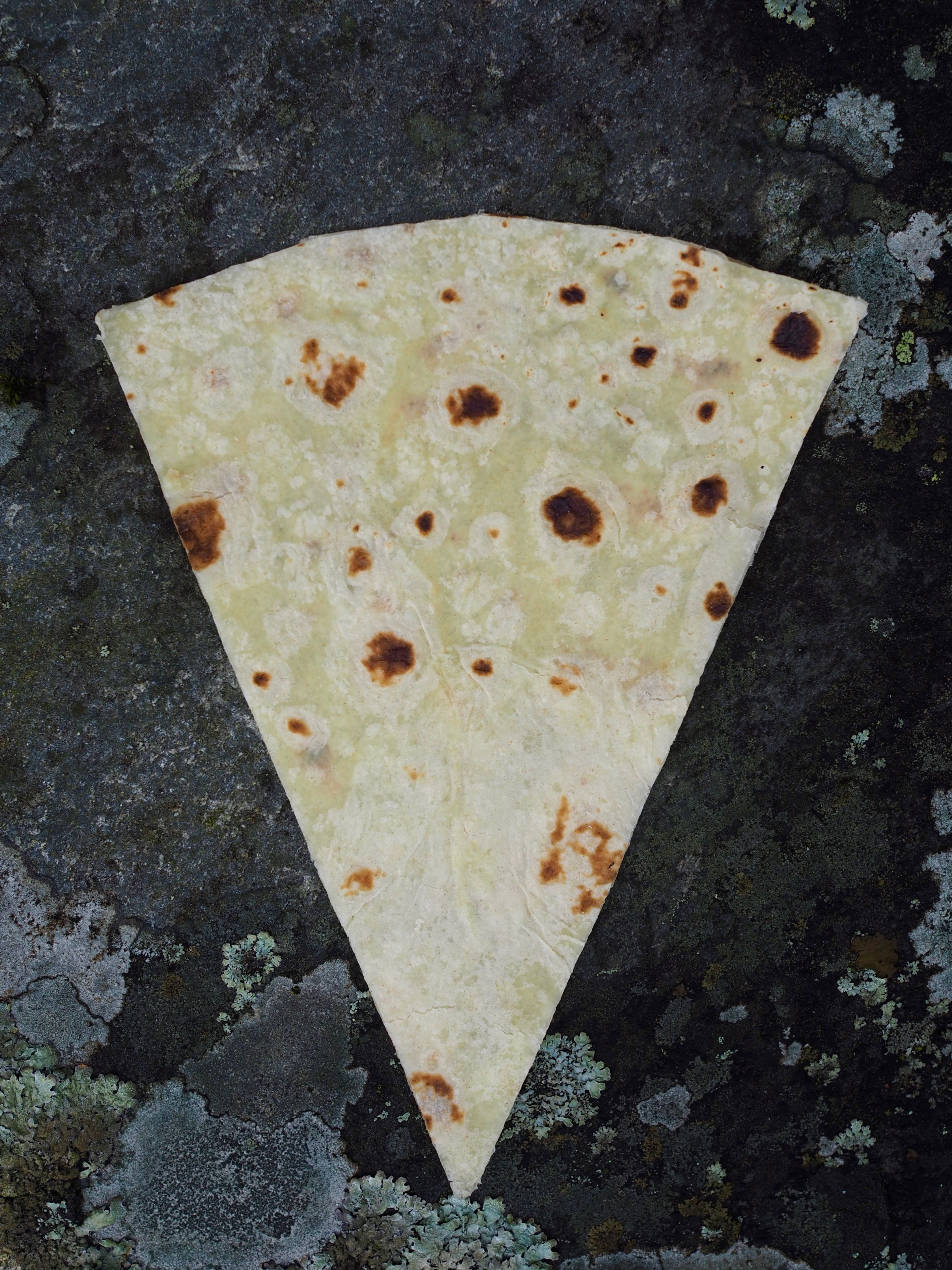
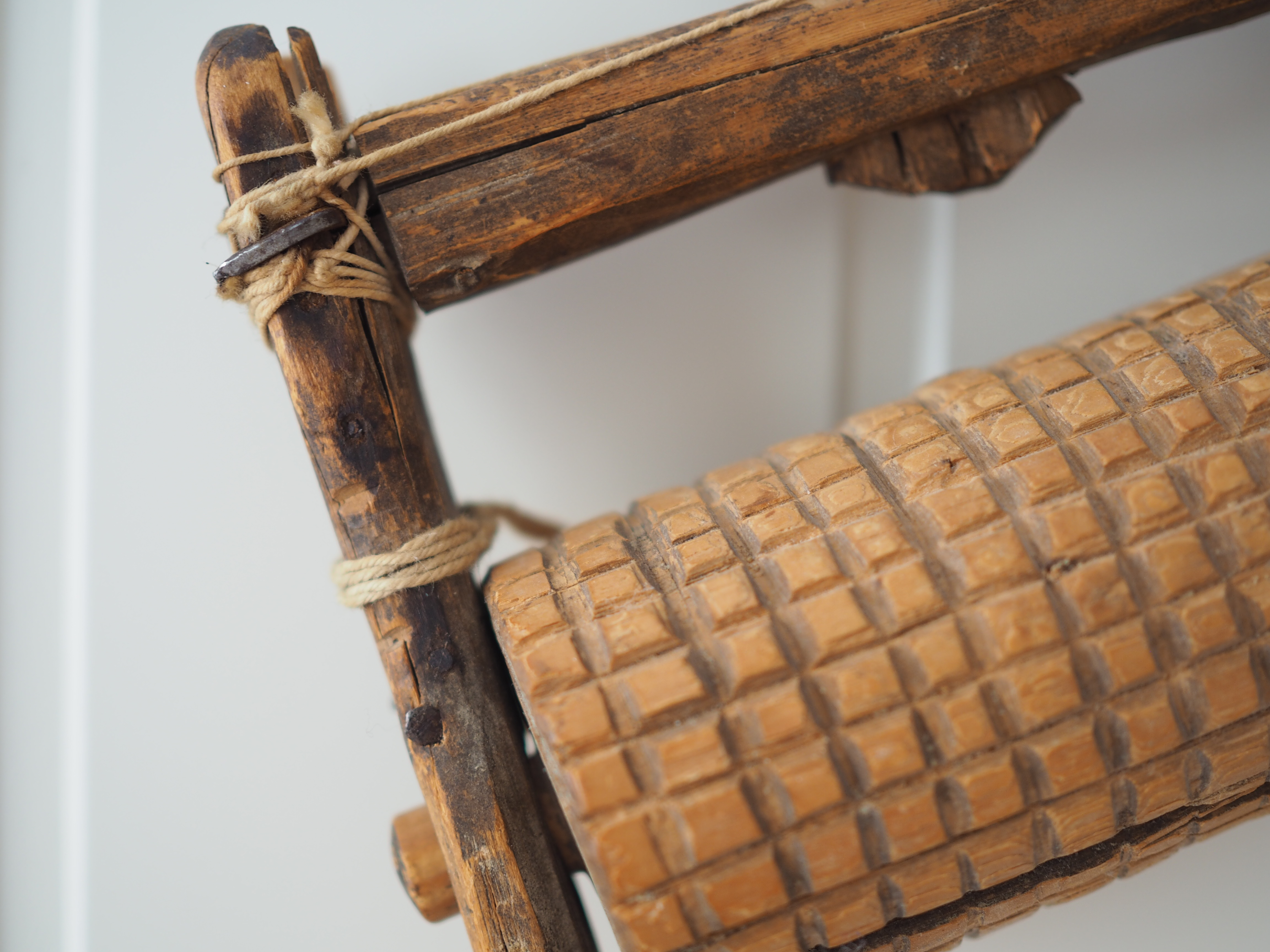 My second visit to Uvdalsleiven Tradisjonsbakst is underway and as I draw nearer to the bakery, I pass the Nore og Uvdal Bygdetun with Uvdal’s stave church towering above the hill; a reminder of the days past and the history of this place. The horses have come to graze nearby and I stop for a moment to take in the surroundings. There’s a peacefulness in Numedal, in the towns which lie throughout. Enriched by gentle people, the structures of their labor and their heritage amidst a landscape of pure, unadulterated nature. I’m reminded how food has shaped and been shaped by the culture, and how certain delicacies remain as pure as the landscape. One such iconic product, which is so commonplace and at the same time ensues such nostalgia and longing for, is kling.
My second visit to Uvdalsleiven Tradisjonsbakst is underway and as I draw nearer to the bakery, I pass the Nore og Uvdal Bygdetun with Uvdal’s stave church towering above the hill; a reminder of the days past and the history of this place. The horses have come to graze nearby and I stop for a moment to take in the surroundings. There’s a peacefulness in Numedal, in the towns which lie throughout. Enriched by gentle people, the structures of their labor and their heritage amidst a landscape of pure, unadulterated nature. I’m reminded how food has shaped and been shaped by the culture, and how certain delicacies remain as pure as the landscape. One such iconic product, which is so commonplace and at the same time ensues such nostalgia and longing for, is kling.
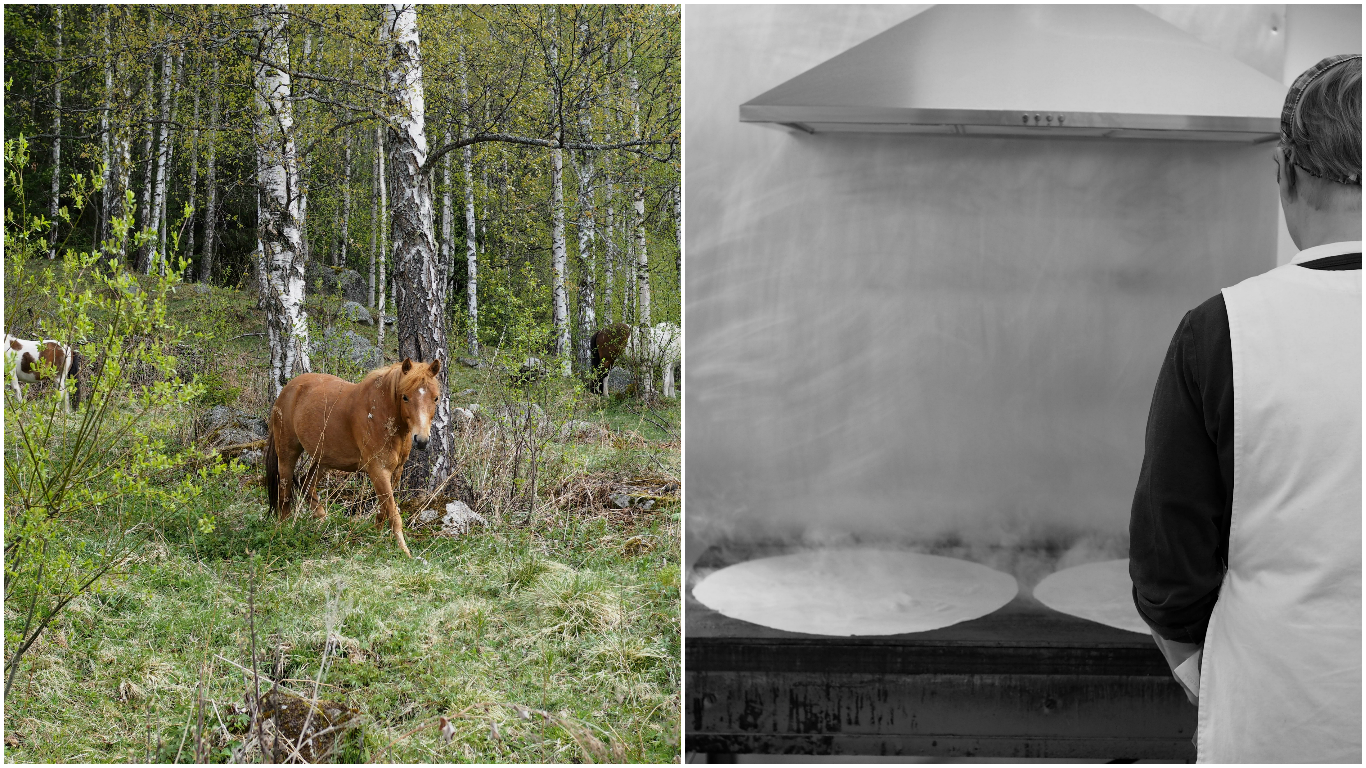
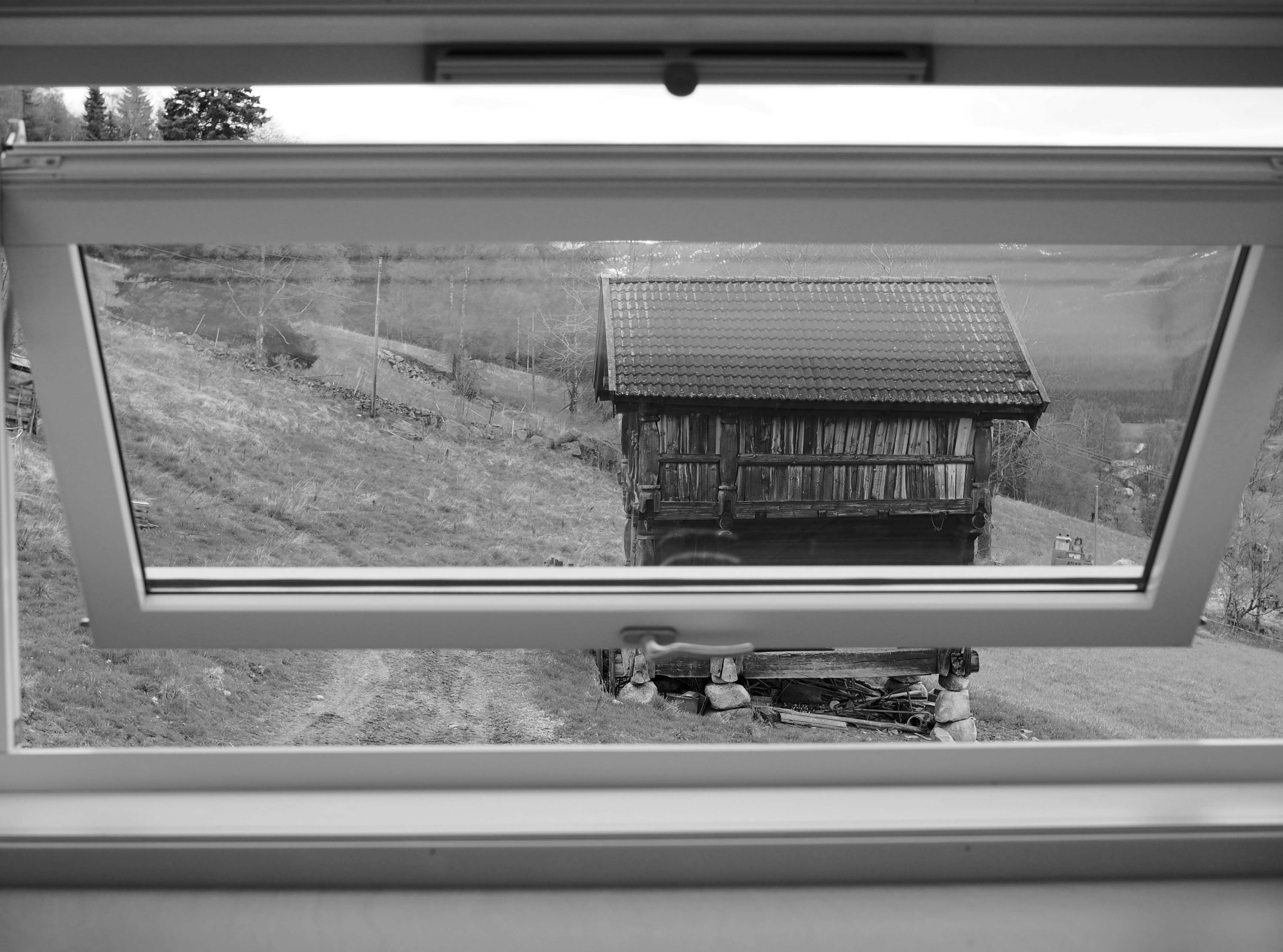 Hanne and Hanne Karine greet me with smiles as they carry on mixing, rolling and baking. Their day begun at 5.30 this morning, and I’m only now joining them as they carry on working until the work is done. No clock to follow, only the work of their hands counting down the minutes. Today, they are making kling. You and I might call it lefse, but to anyone from these parts, it’s kling. Whether with a smear of butter and sugar or served plain, this is kling from Uvdal. Hanne’s recipe has won over many fans, boasting a light and delicate kling, with my favorite being sugar and butter sandwiched between two kling and cut into large triangles.
Hanne and Hanne Karine greet me with smiles as they carry on mixing, rolling and baking. Their day begun at 5.30 this morning, and I’m only now joining them as they carry on working until the work is done. No clock to follow, only the work of their hands counting down the minutes. Today, they are making kling. You and I might call it lefse, but to anyone from these parts, it’s kling. Whether with a smear of butter and sugar or served plain, this is kling from Uvdal. Hanne’s recipe has won over many fans, boasting a light and delicate kling, with my favorite being sugar and butter sandwiched between two kling and cut into large triangles.
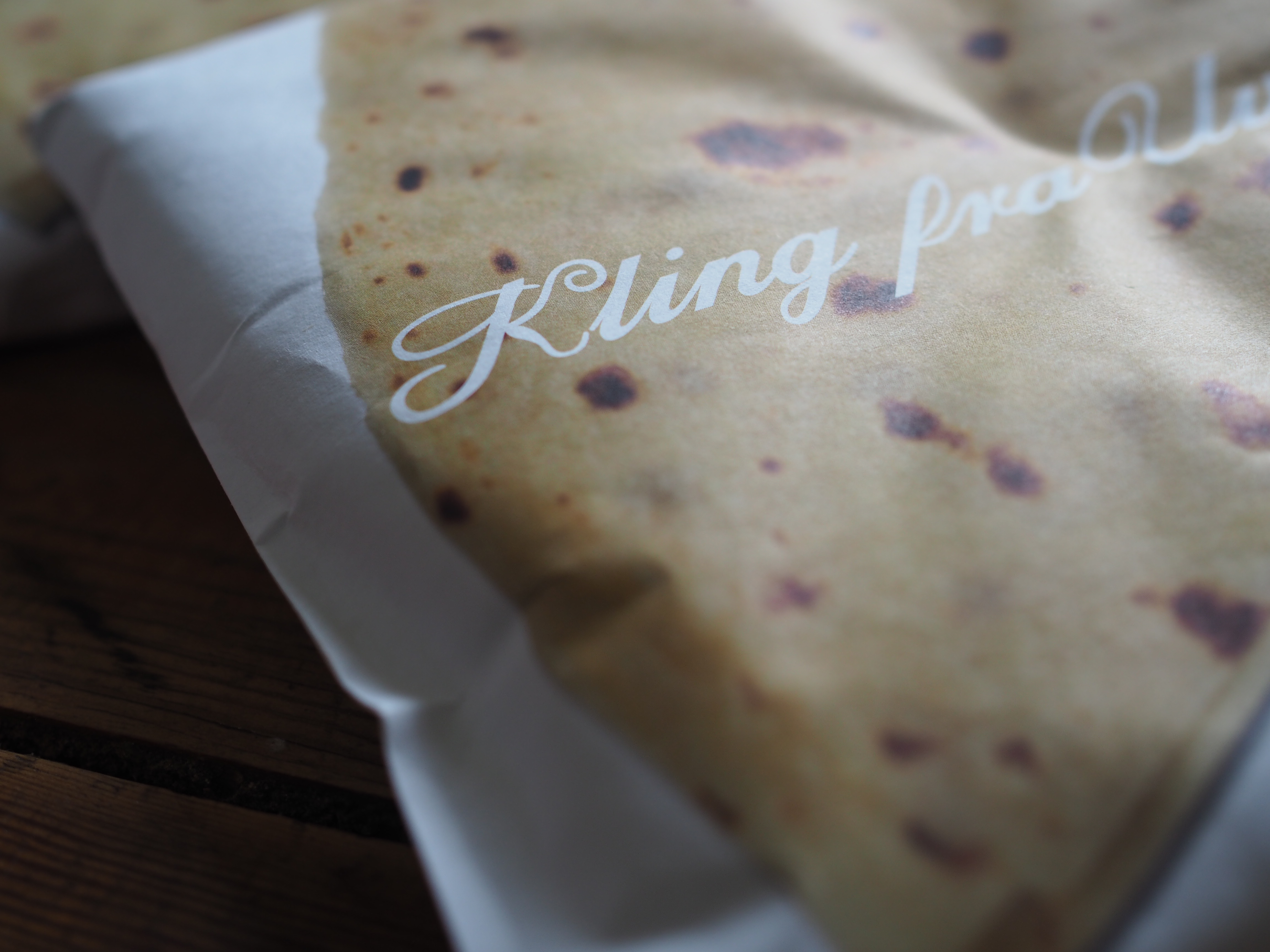 Rolling each kling by hand is a practice not suitable to the demands of production. These days, a machine aids in the rolling, but in no way is an indication of the process being easy. Each dough must go through the machine a total of 14 times, and each time through, the ladies must flour, turn, adjust and observe. There is an unspoken synchronization at work. It is second nature to them, but I can see it clearly. One makes the dough, the other rolls the prepared dough and when enough kling has been rolled out, one will make their way toward the takke. If cooking one at a time isn’t hard enough, they cook two simultaneously. Alternating and flipping. And this method carries on, with each task being traded off between the two of them so there is a balance. For both mind and body.
Rolling each kling by hand is a practice not suitable to the demands of production. These days, a machine aids in the rolling, but in no way is an indication of the process being easy. Each dough must go through the machine a total of 14 times, and each time through, the ladies must flour, turn, adjust and observe. There is an unspoken synchronization at work. It is second nature to them, but I can see it clearly. One makes the dough, the other rolls the prepared dough and when enough kling has been rolled out, one will make their way toward the takke. If cooking one at a time isn’t hard enough, they cook two simultaneously. Alternating and flipping. And this method carries on, with each task being traded off between the two of them so there is a balance. For both mind and body.
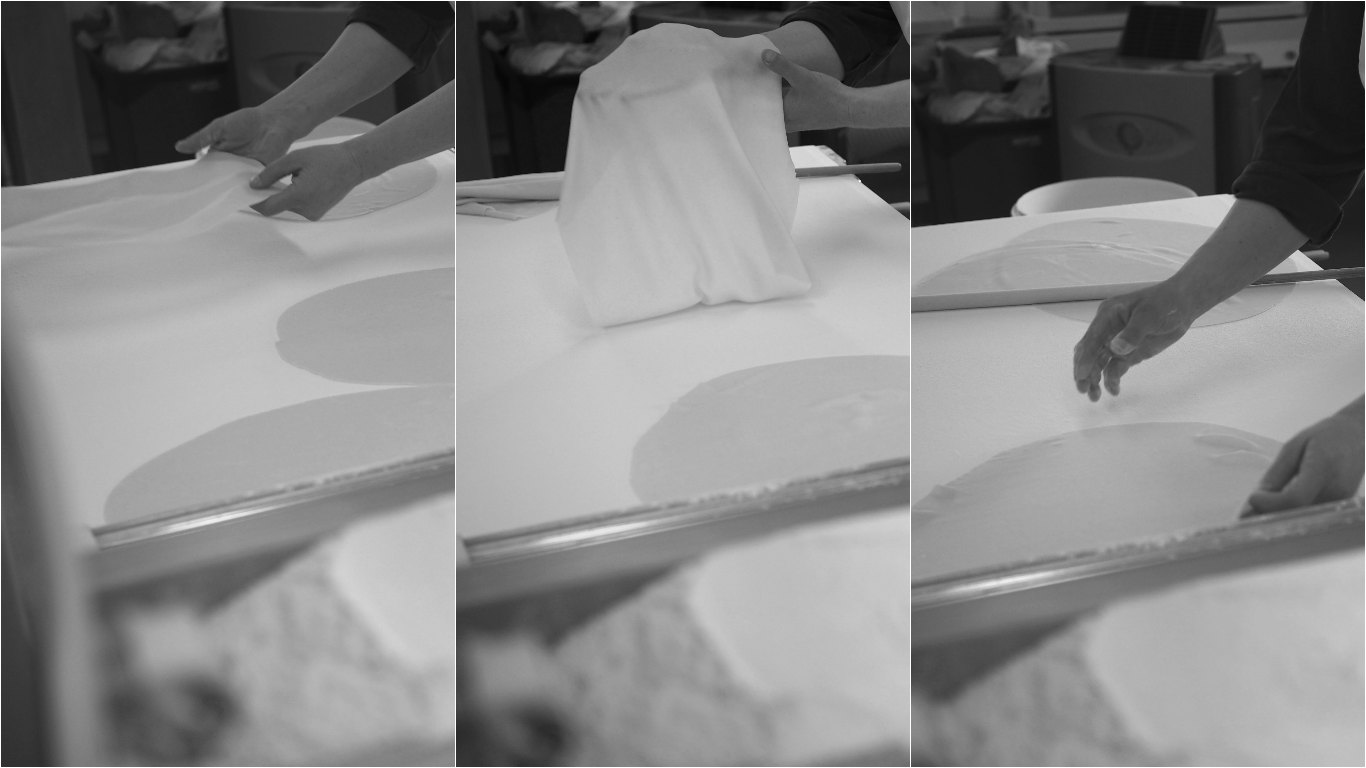 The recipe is from her grandmother. And as each one begins to bubble and brown, they are placed on top of each other and wrapped in a blanket of plastic and fabric. Stored overnight, they will be prepared the following day. Some will be given a coating of butter and sugar, while the rest will be left plain. Hanne tells me that the plain kling goes well with warm beta soup, or topped with some butter and eaten with local rakfisk (fermented fish). She reveals that her custom is to eat it with a bowl of risengrøt (rice porridge), although this is not common practice. A habit she indulges in at home on the rare occasion.
The recipe is from her grandmother. And as each one begins to bubble and brown, they are placed on top of each other and wrapped in a blanket of plastic and fabric. Stored overnight, they will be prepared the following day. Some will be given a coating of butter and sugar, while the rest will be left plain. Hanne tells me that the plain kling goes well with warm beta soup, or topped with some butter and eaten with local rakfisk (fermented fish). She reveals that her custom is to eat it with a bowl of risengrøt (rice porridge), although this is not common practice. A habit she indulges in at home on the rare occasion.
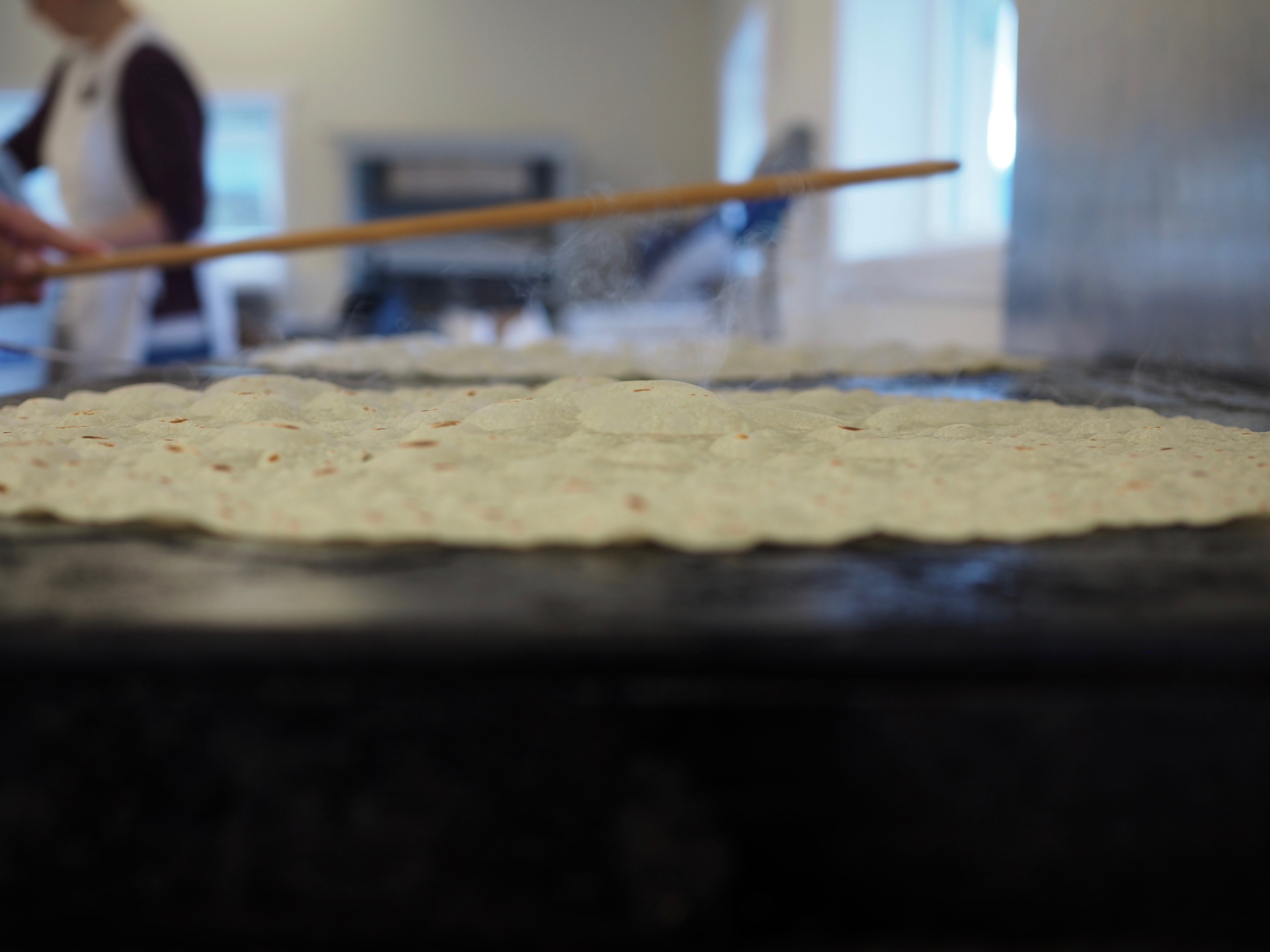
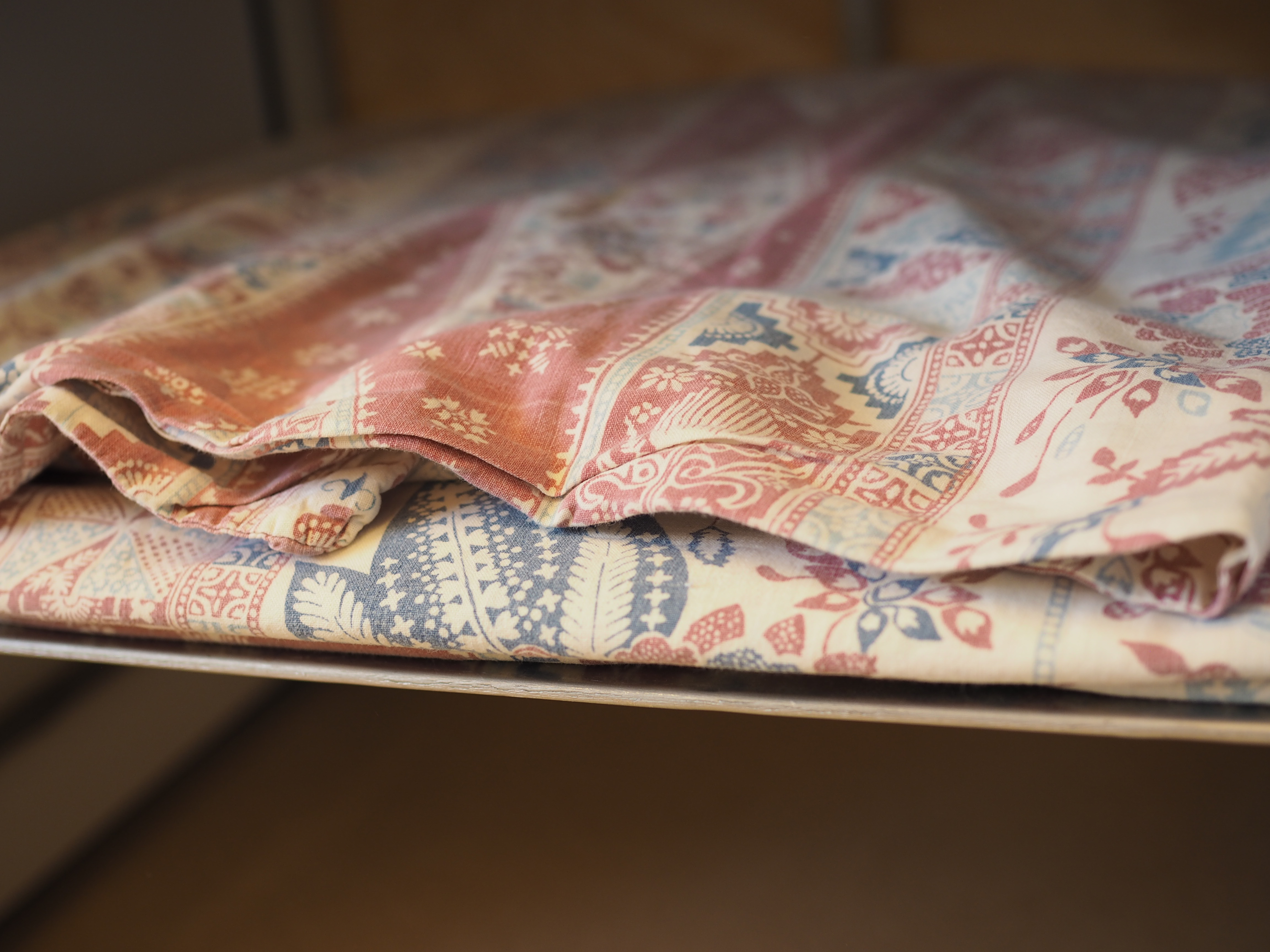 There’s a quietness today. Hanne is quick to explain that on kling days they generally keep conversation to a minimum. They work in auto-mode and move to the beat of the radio playing in the background until it’s time for a short break. Coffee. Served black and taken on the front steps. We reminisce over the area and the history of the place. We discuss kling and markets. We agree that tradition is strong in these parts and that everyone is proud of their heritage, their recipes and the hard work that goes into every morsel. I’m not from here. I’m only a guest, but I feel closer to this valley and the people, because of these conversations and people like Hanne and Hanne Karine.
There’s a quietness today. Hanne is quick to explain that on kling days they generally keep conversation to a minimum. They work in auto-mode and move to the beat of the radio playing in the background until it’s time for a short break. Coffee. Served black and taken on the front steps. We reminisce over the area and the history of the place. We discuss kling and markets. We agree that tradition is strong in these parts and that everyone is proud of their heritage, their recipes and the hard work that goes into every morsel. I’m not from here. I’m only a guest, but I feel closer to this valley and the people, because of these conversations and people like Hanne and Hanne Karine.
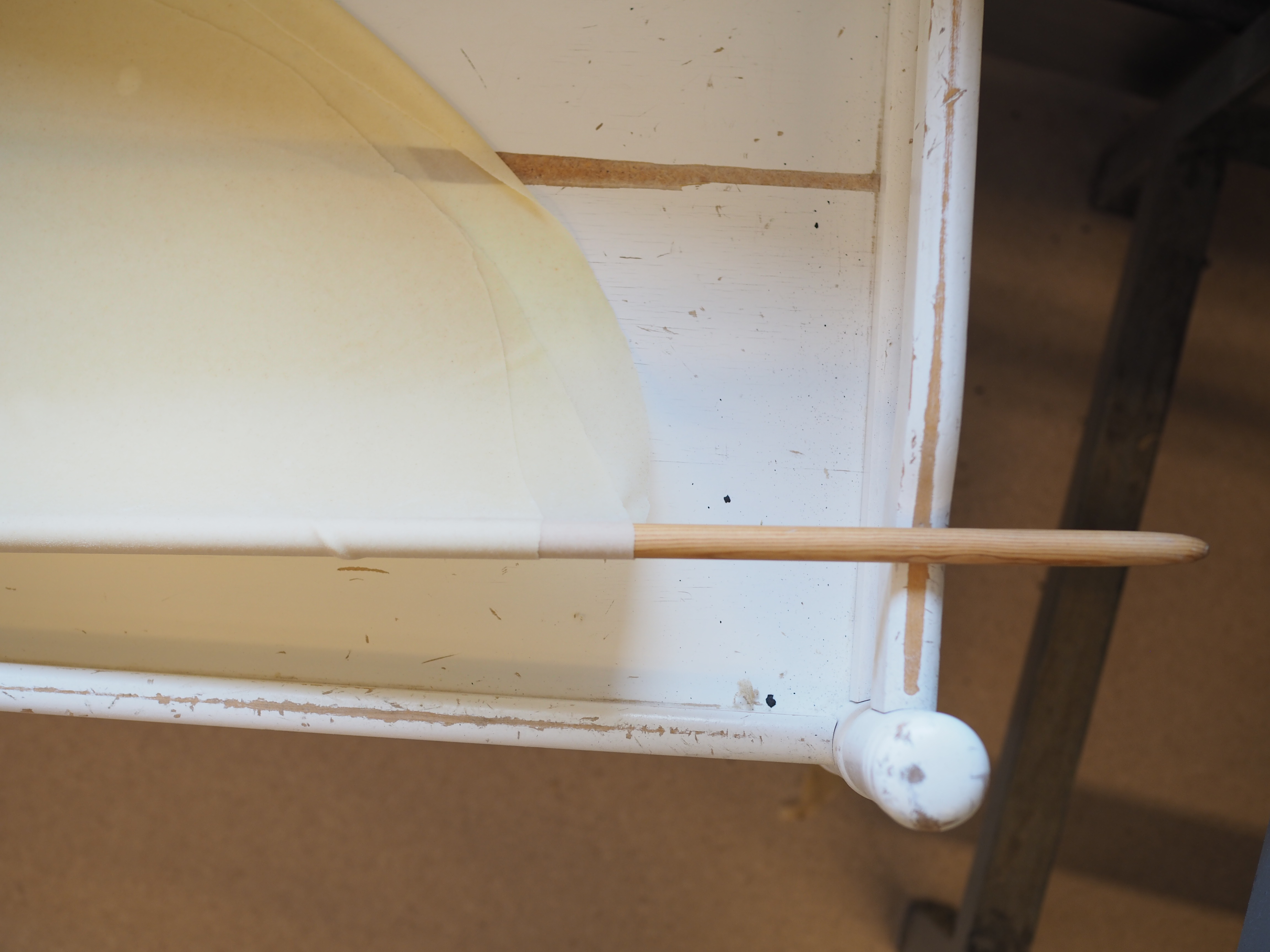 Hanne is a great example of the labor and love that goes into maintaining tradition and running a business. Her products speak for themselves in quality and flavor. And in an area where everyone makes their own version of her products and swears by their family recipe, she certainly has to work even harder to standout. And she does so gracefully. She is a great advocate for Uvdal and the traditions of the community. She’s not the only one, but she is a voice and her products carry a certain weight of importance as they tell the stories of the area’s food culture to those passing through and they can also inspire others to see the value in local products.
Hanne is a great example of the labor and love that goes into maintaining tradition and running a business. Her products speak for themselves in quality and flavor. And in an area where everyone makes their own version of her products and swears by their family recipe, she certainly has to work even harder to standout. And she does so gracefully. She is a great advocate for Uvdal and the traditions of the community. She’s not the only one, but she is a voice and her products carry a certain weight of importance as they tell the stories of the area’s food culture to those passing through and they can also inspire others to see the value in local products.
Many thanks to Hanne Tufto, Hanne Karine and Edyta for sharing their skills, time and coffee ♥
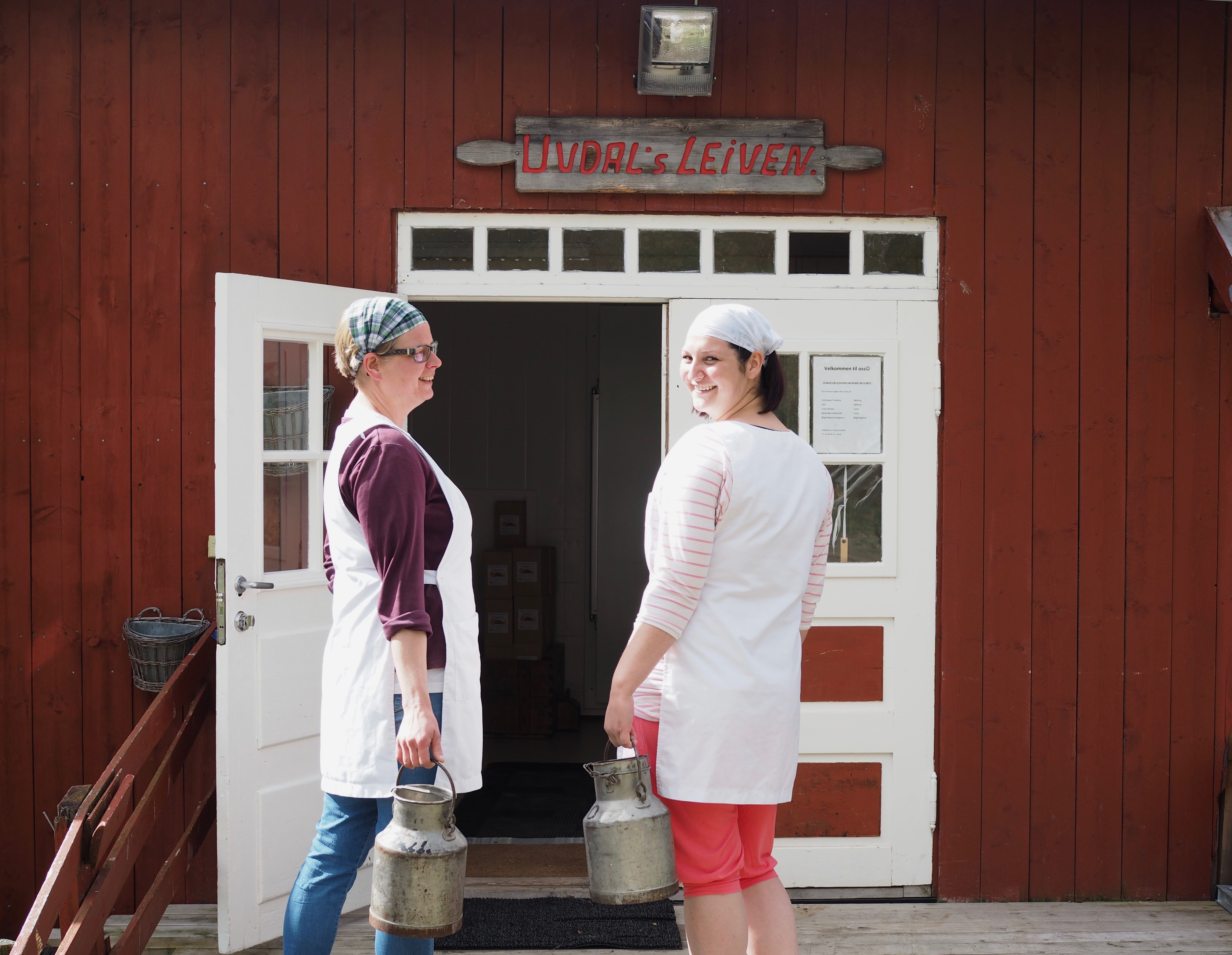
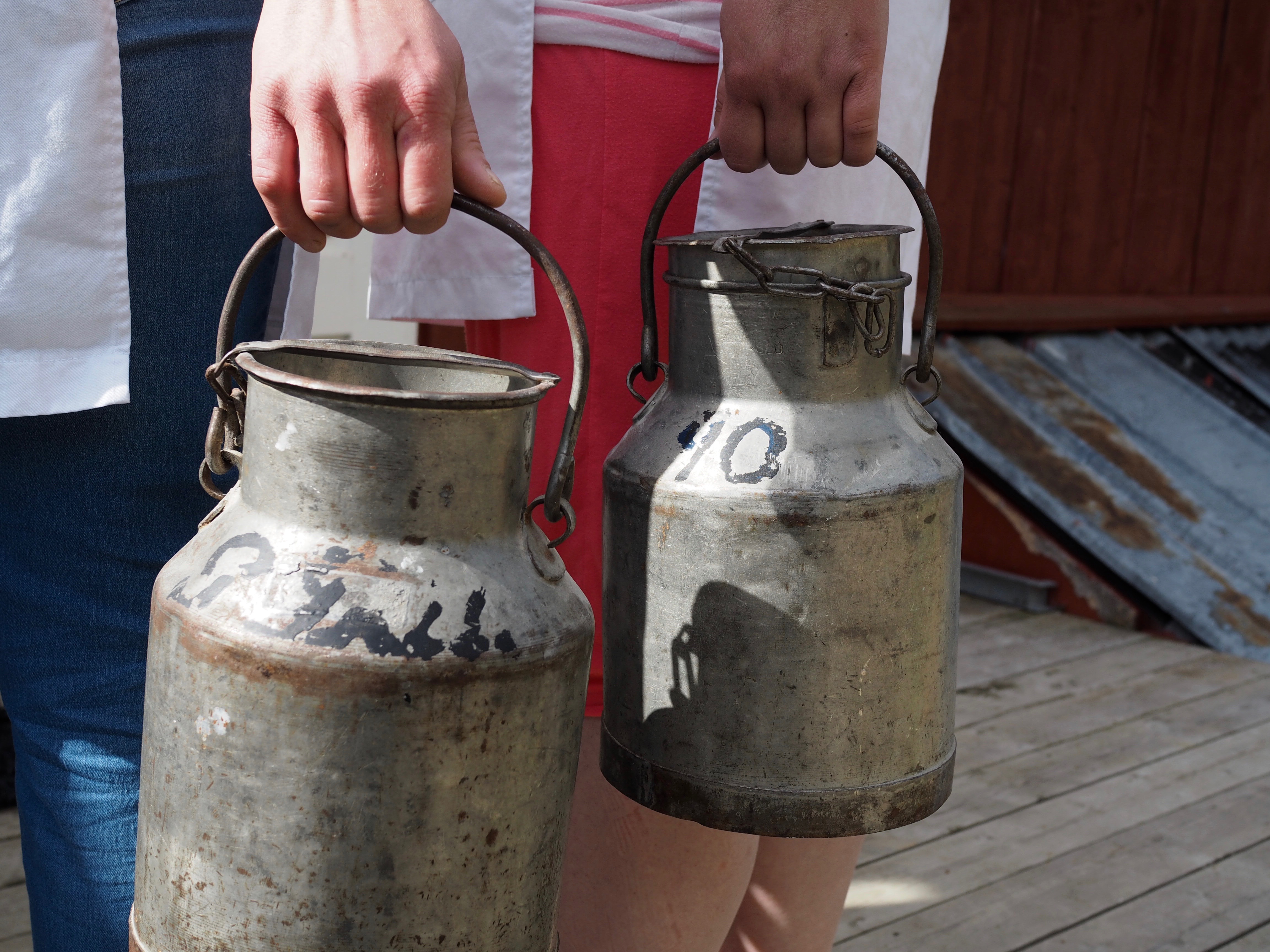
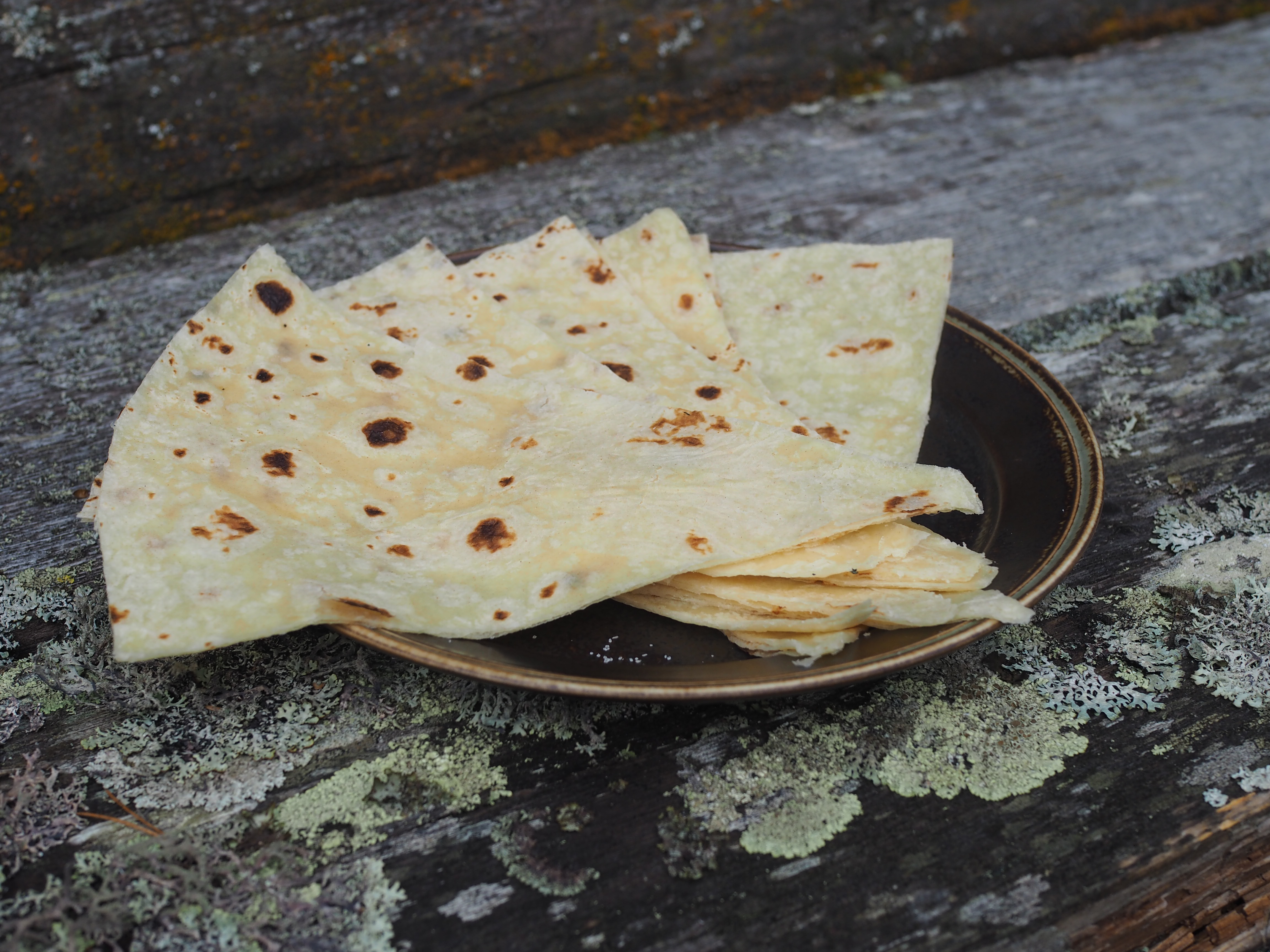
Uvdalsleiven’s Kling
Ingredients:
- 2/3 cup (150 g) margarine
- 1 Tb (10 g) lard/smult
- 4.2 cups (1 liter) whole milk
- 8.4 cups (1.05 kg) flour
- butter
- sugar
Place the margarine, lard and milk in a saucepan and bring to a small boil. Remove from heat.
In a large bowl or food processor (with dough blade), place the flour and add the warm milk mixture to it. Mix together and knead well until it comes together and forms a nice, smooth dough, a couple of minutes.
Divide the dough into pieces around 140g (0.3 lbs) in weight. Shape into balls and flatten. On a lightly floured surface, roll out each dough very thinly, maintaining the round shape. It works best to roll out from the center, then out again and work around the kling rather than rolling back and forth. Use as little flour as possible.
Heat up a takke or griddle and cook each kling on top while hot. Turn the kling several times until it starts to turn golden brown and bubble a bit. Stack the finished lefse, wrap in a cloth and let rest overnight.
When the kling is cool, you can smear it with butter and sugar, top with another kling and cut into large slices. You can also leave the kling plain.
Kling with butter and sugar can be served as a treat alongside coffee or tea. Plain kling goes great paired with soups, fish, trout mousse, and/or topped with the items of your choice. Treat it as you would a tortilla.
See the first part of my visit to Uvdalsleiven and how make their traditional rømmebrød here.
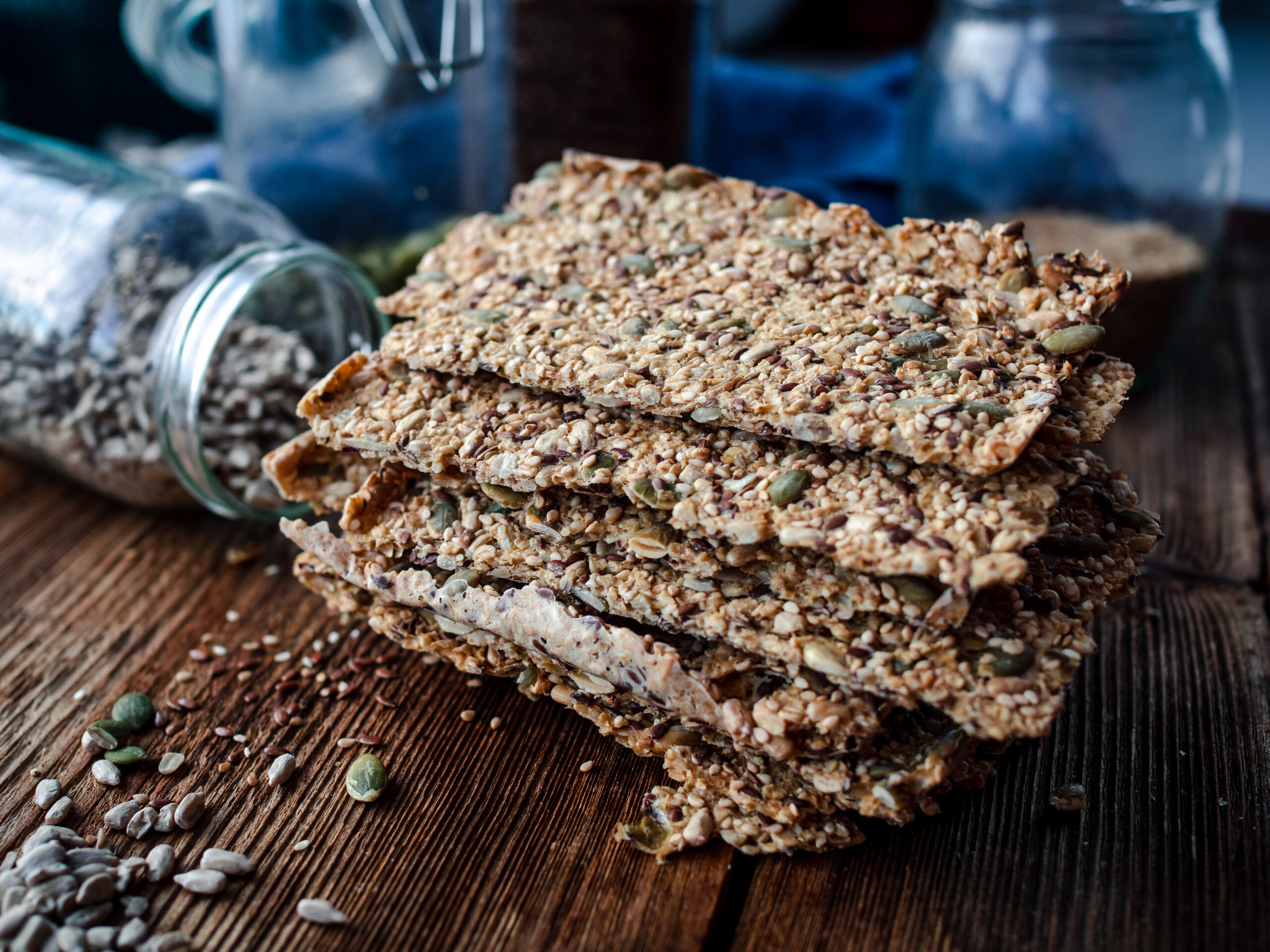
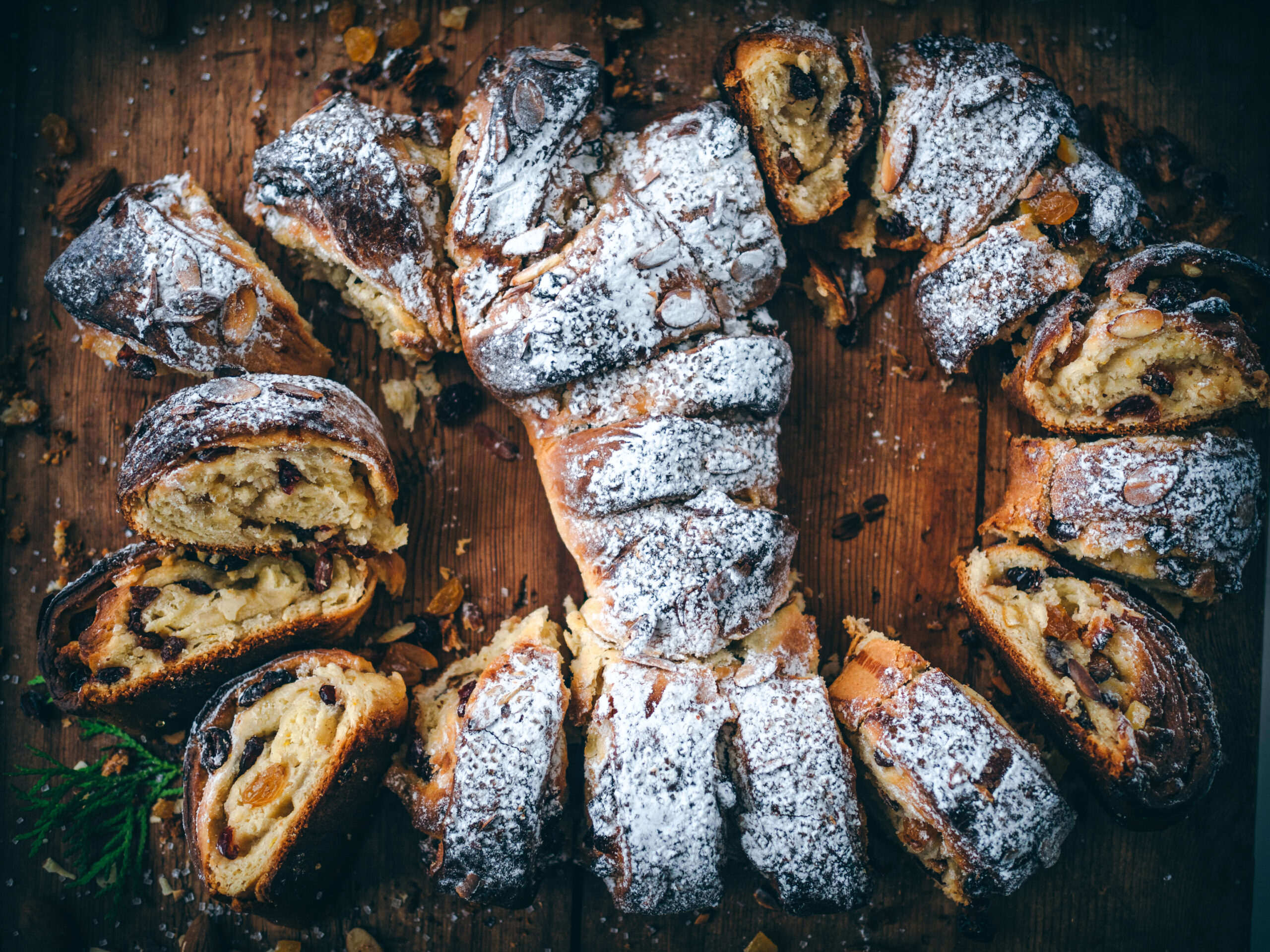
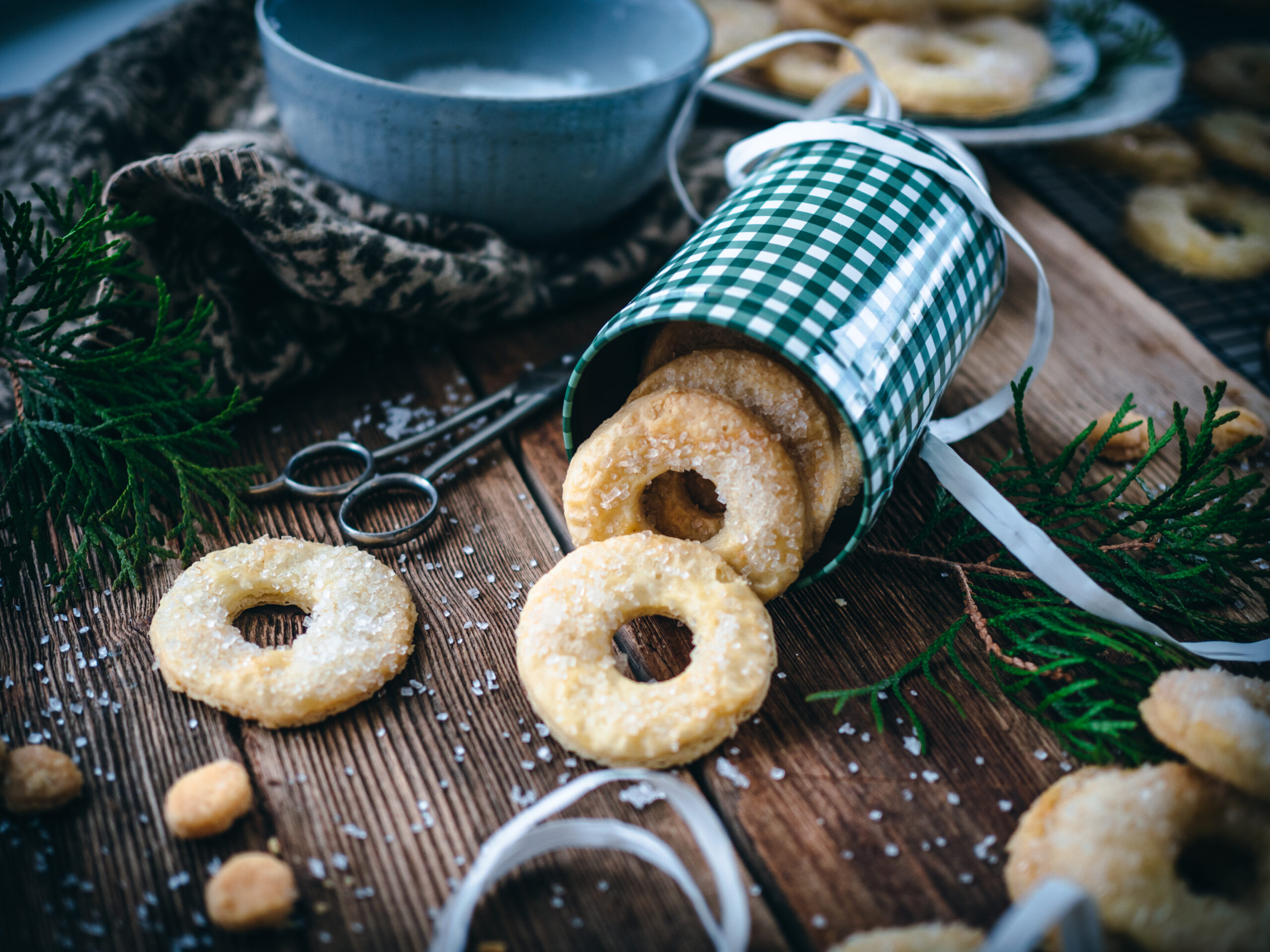
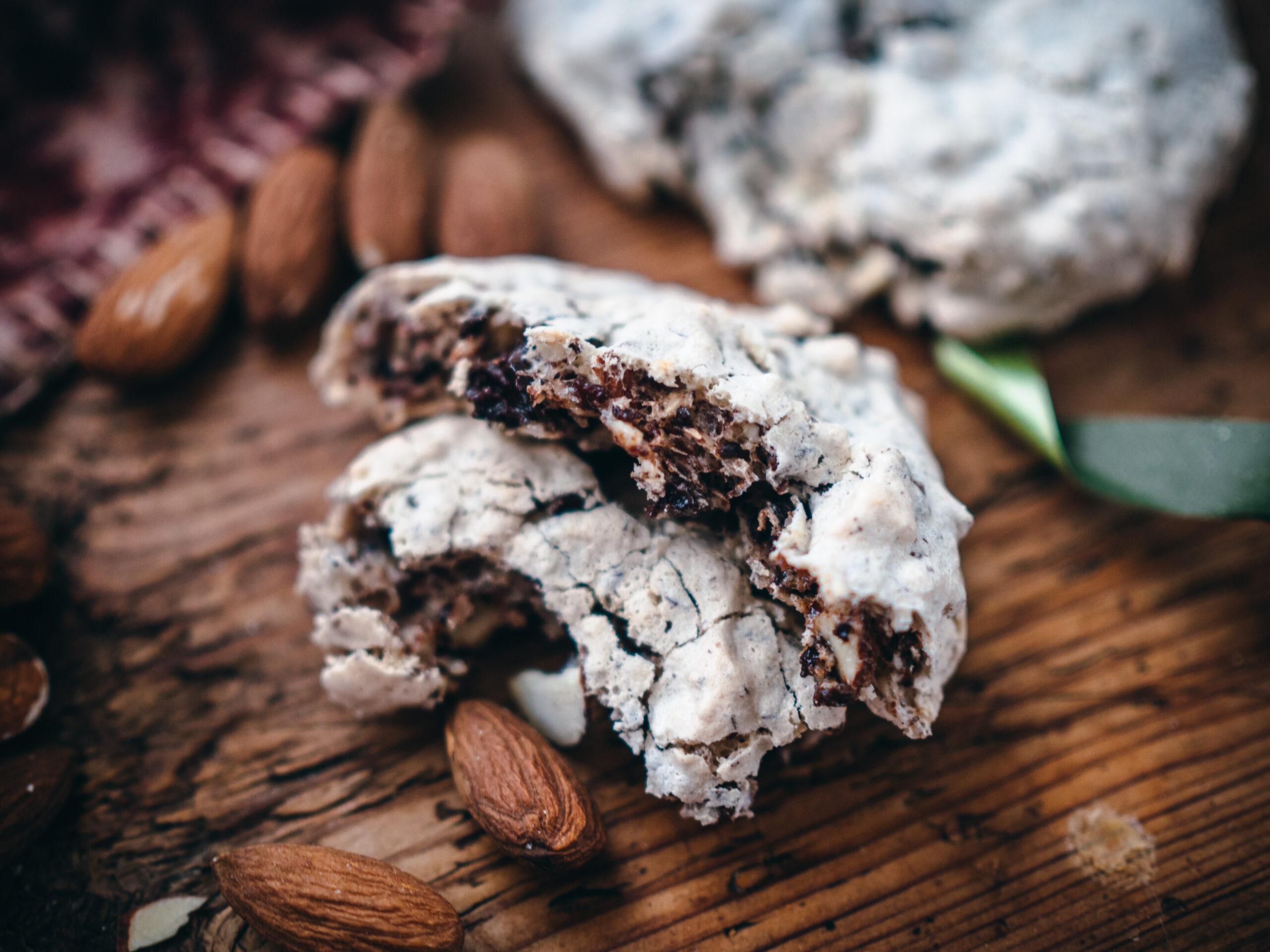
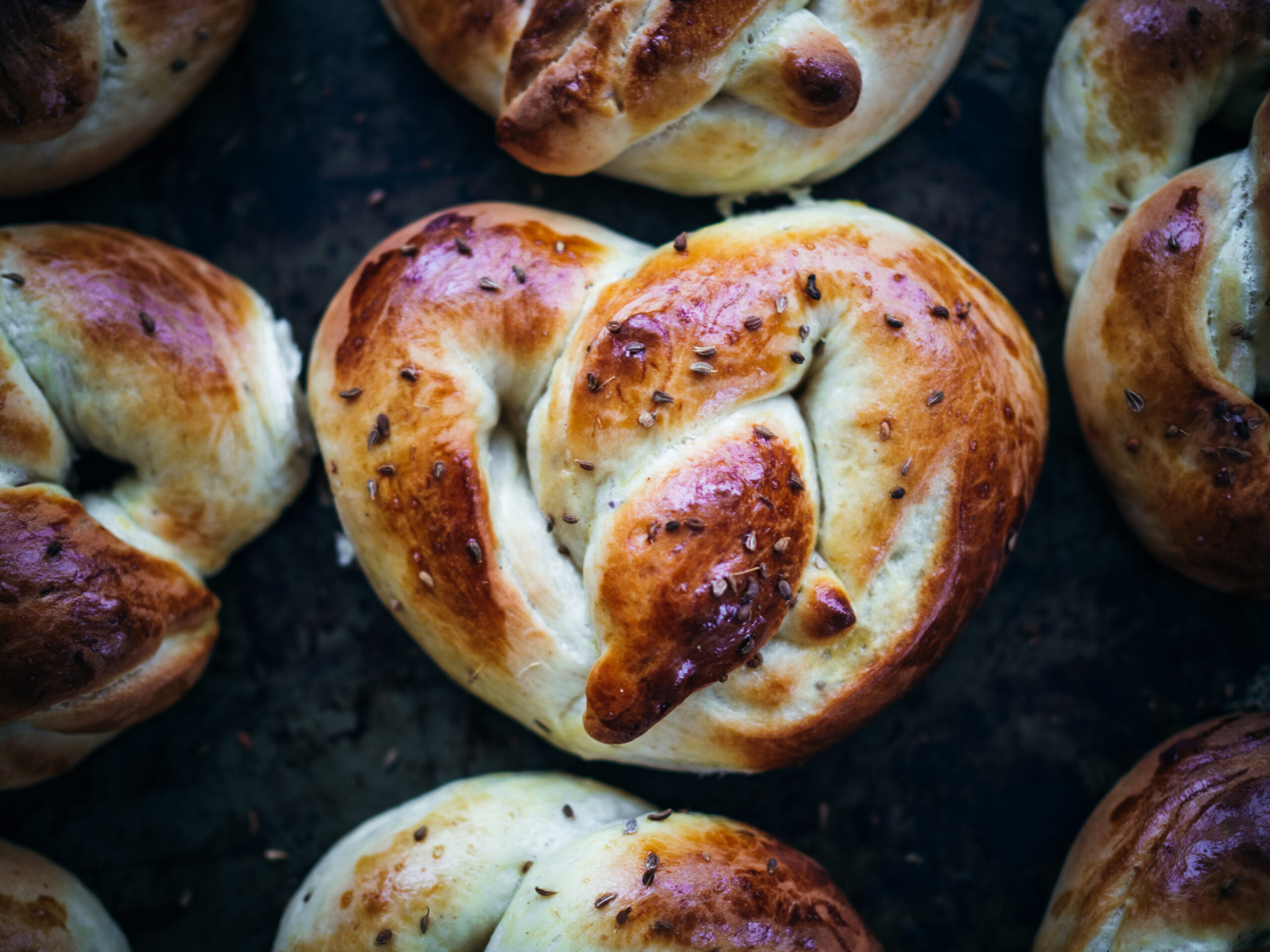
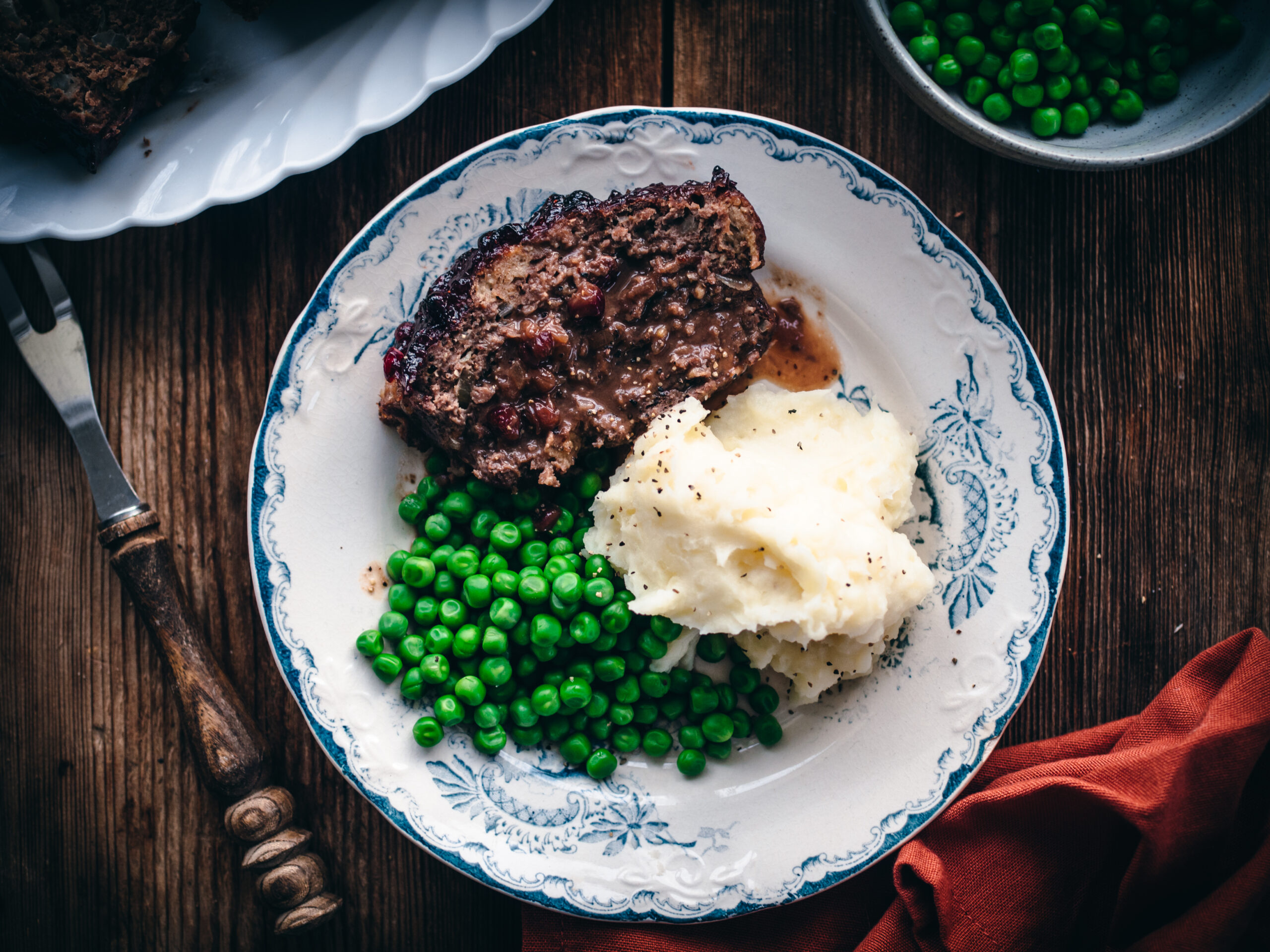
Hello Nevada, I want to confirm that in their recipe for Kling that they actually use margarine and not butter? Of course each recipe can differ slightly, but the one that was passed down to us uses butter. The ingredients otherwise are the same, just varied slightly in the amounts of each item. We have the special rolling pin and thin wooden paddle used to flip it once on the griddle. 🙂 We use butter and raw sugar for on the kling, but a friend of ours whose heritage is also Norwegian and lives nearby us uses Lingonberry jam on theirs. Am loving reading over your recipes and reading about the traditions!
Hi Alma, yes that is correct. Hanne uses margarine instead of butter. It works better for her recipe and she sticks to it, even though some people do make it a point to tell her that she should be using butter! There’s a whole butter vs margarine rivalry here :). I have never had lingonberry jam on my kling before, so I will have to try it!
I am from Iowa and I can not tell you how excited I am to finally see a “lefsa” recipe made from cream and not potatoes!! People have been thinking I’m crazy when I tell them that my great, great grandma’s recipe has no potatoes in it!! This will help greatly as we are trying to locate where the Benson’s hale from
in Norway-and as soon as we figure it out, my Dad and and I are making the trip!! Thanks for this post!!
[…] passes around. We sit, still and quiet, gazing out into the distance. Sirikit hands me a slice of kling (lefse with butter and sugar) from Uvdalsleiven Bakeri. It tastes so good and seems to boosts […]
My Grandma used to make LEFSE on a wood stove. My Grandpa would peel,the potatoes and get them boiling. They were so good! OK SO NEVER MARGARINE…ICK, ONLY BUTTER.. AND WHERE ARE THE POTATOES????? She was full Norwegian. NO POTATOES???? I’m blown away.
I know – everyone has their favorite family recipe and their preferred ingredients 🙂 Lefse actually originated without potatoes, since potatoes only began being used in the 1800s as a cheaper substitute for more costly ingredients. In some areas of Norway, they retain the variation without potatoes. Flour based or potato based – they are all good! 🙂
I’m with you, haven’t heard of it without potatoes. My mother and parents were full norweigen and this recipe is far from what they did! But will have to try it and see the difference!
In my area we’ve always made this with potatoes. Is this the Kling/lefsa divide?
There is so much divide when it comes to lefse 😉 Kling is just another name for lefse (there are many lefse variations across Norway – from thick to thin, to flour based and potato based). Originally though, lefse was made without potatoes and it was only around the 1800s that potatoes began being used. Everyone has their favorite version and I suppose that is where there is a divide 🙂
No potato? The only lefse I’m familiar with I made from potato. (And all that other stuff)
No potatoes here. There are many variations of lefse across Norway, some with potato and some without. I think all variations are delicious – but I am quite keen on this one 🙂
Thank you for the demonstration. Your pictures are beautiful, Someday I will visit Norway. I live in Wisconsin, USA. We make lefse with riced potatoes,
butter, cream and flour.
Sincerely, Jorunn
Thanks Jorunn! I hope you get to visit here soon! Best, Nevada
I am fascinated with what I have read so far. I learned how to make lefsa with potatoes and flour and butter and cream, from my parents who learned from a friend. I find it interesting that potatoes are a relatively “new” addition. I will share that with my mom
I am Debbie and live in Fridley, Minnesota. I hope someday to travel to Norway for a nice long visit
My Nowegian relatives have always made lefse with potatoes. Is this just another type of lefse?
Yes, just another variation. There are a lot of types of lefse across Norway – flour-based or potato-based, thick or thin, eggs or no eggs, syrup or no syrup – and the fillings can vary from sweet to savory.
Is lefse also made with potato flour?
I think there might be some recipes which use potato flour (potetmel), although I have never tried any or made any with it myself.
It really depends on the part of Norway your family originates. My family too uses potatoes. I would love to learn more of exactly where my families come from!
Very true. I think learning about family heritage is such a fascinating undertaking – I really hope you get a chance to discover more about the areas of Norway your family migrated from!
I was looking at all the ingredients and I never seen potatoes in the recipe at all. Do you not use them? My recipe calls for it.
This type of lefse contains no potatoes. In this area (Numedal, Norway), all “kling” is flour-based. The reason being, I am told, is that when potatoes came to be used in the 1800s, they became a cheap substitute for more expensive ingredients. In order to keep kling special, the people continued to use the more luxurious items of eggs, cream, butter, and white flour. Of course, other areas of Norway also make their lefse without potatoes. There are many variations across the country, it just depends on where you are and who you are speaking with 🙂
No potatoes?? I have never read a recipe for lefsa without using potatoes!! Please advise me!! Would love to make this!!
That’s right, no potatoes 🙂 Across Norway, you’ll find flour-based lefse or potato/flour-based lefse. In this area, kling (another name for lefse) does not contain any potatoes. I actually tend to favor this version, but all lefse is great!
My Dad’s recipe is the flour and he has made it for many years. Our Christmas tradition is “Scandinavian tacos” 🙂 We layer mashed potatoes, Swedish Meatballs, peas and fold up like a taco. Pour melted butter over the top. Nummy!
That sounds delicious! 🙂
What kind of white flour to you use, unbleached, bleached, or all purpose flour?
You can use sifted all-purpose flour.
Unfortunately I am Celiac. Ever tried this with a gluten free flour? What kind if you did? I miss Lefsa.
I have not, but you should definitely try it using an all-purpose GF flour and let me know how it goes!
How exciting to see this post today!! My mom made both kling and lefse; I started helping my mom turn the lefse on a wood stove when I stood on a chair at five years old! BUT my favorite is KLING like mom made it; I will check this recipe against hers. I think it came from her Gramma Hovey Wulff who was from the VIK area. Now I am really going to make some KLING, very soon, too. Mom made large kling, then spread them with soft butter that had been mixed with a little scalded milk, then sprinkled them with sugar and folded them up kind of like an envelope. Oh, YUMMY!! My two sisters and I made some about four years ago and it was very good. I am SO excited as this is the first time I saw the word KLING on the internet! THANK YOU.
Hi Beverly. There are not many people outside of Norway who are familiar with kling, so I am delighted to get your comment! I am quite partial to kling as well. And how lovely that you learned it from your mother and have made it with your sisters. I hope you do get to make some real soon!
Thank you for your post. I really enjoyed seeing the lefse made, learning about the cooks and your trip. I was raised eating lefse but now that I live in Texas, I have to wait until I visit North Dakota to get a supply. I tried making it but wasn’t successful. If my grandmother was still alive, she could instruct me but I’m on my own. Have a great holiday
Thanks Jacquee! I do hope you try your hand at making lefse again. I think it’s nice to have friends over who can help and laugh when things don’t always work out with the dough or shape (as they sometimes do – for everyone, even the lefse experts!). Have a wonderful holiday season as well!
Oh how I miss lefsa. My grammy Owen made it. I haven’t had any for over 40 years.
I’ve tried to find somewhere to buy it but want the kind with no potatoes.
I’m not sure if I can make it or not. I would love to be able to. My mom is 89 and misses it dearly.
Hi Jeanie! How wonderful to have such fond memories of your grammy making it! You should definitely try making it at home – the first few are always a little rough, but once you get going, it’s not so hard. And if you have help, even better! 🙂
Has anyone ever made potato dumplings. Using ham boil then drop the dumplings in ham juice.
Hi Mary – Yes! We make raspeballer (or komle, klubb, etc) boiled in salted stock. I have a vegetarian recipe on the blog as an alternative to the meat stock.
We make a Krubla it’s grated potatoes and flour drop in ham juice and boil till done. I usually make Between 10/20pounds (of potatoes) put in my big toaster they cook about 10/12hrs. All the grandkids except two don’t eat them. We eat them with lots of butter the next day we fry them . I discover they freeze well .if any are left which is great for later
I loved seeing this post, thank you. My husband’s family make lefse with flour, water, and a little cornmeal. They roll it out very thin and dry it on the griddle. They then wet it with milk and dry it again on the griddle. They store it dry until ready to use and moisten it between damp dish towels the morning they want to eat it. They eat it spread with butter, rolled, and dipped into corn syrup. Your post was the first time finding out that they are likely making an older version of lefse. I, along with other family members, have tried finding out more information about the type they make but haven’t been successful. Everyone else we have ever talked to uses potatoes. If you have any advice for us in how to learn more about the history of our version of lefse, the family would really appreciate it. Thank you so much.
Hi Lynette. Thanks for your comment! Sounds like a very traditional way of making lefse. Lefse, as I have come to learn, stems from flatbrød (flatbread). The dry and hard breads (flatbrød) would be dipped in water to soften. These softened flatbreads took on the name lefser. Later on, people would make lefse without dipping the flatbreads (and using other ingredients like milk, cream, butter, eggs, etc). It seems that the recipe your husband’s family is making is flatbread, then moistened to become a type of lefse. I’ve never heard of it cooked on a griddle, then soaked in milk, then cooked again on the griddle again – but this could very well be a common way of doing it. Do you know what area of Norway your husband’s family comes from? Very interesting!
My grandma was from the Trondheim area and made her lefse with potatoes, and rolled it out so it was thicker then most. We ate it also with sugar and rolled up. We also have a crisp bread that shows up at the holiday Scandinavian church dinners that is like lefse in appearance. I think it is made with flour. Is this a type of Kling?
Hi Beverly. If it is crisp bread, then I suspect it is flatbread (flatbrød). Flatbread can be make with potatoes or without. It is cooked in the same way as lefse (on the griddle), but hard and served almost like a cracker. Kling is a type of lefse that is thin and soft.
My husbands grandma used to make this along with lutefisk every Christmas. She also made solta and never wrote down the recipe or shared it. I would love to find it…if anyone knows of one…please share. Thanks in advance.
Hi Terri. Can you elaborate a little more on the recipe you are trying to find? Would love to help you locate something 🙂
I believe Terri is referring to “sylte” which is seasoned pork bits in aspic that is sliced and eaten as a topping for open faced sandwiches.
You are probably right!
Thank you so much for this recipe and all of the information. I don’t know what part of Norway my grandparents came from, but their name ends in -vik – and I understand some of the family still lives on the farm there. I will be trying this recipe as my son misses my mom’s (hardbread) lefse. Our recipe does not have potatoes in it, it becomes hard as it cools and you run boiling water over it, then wrap it in towels to steam. It is eaten with butter and sugar. I haven’t made any for many years, but I do remember cleaning the top of the wood kitchen stove to cook it on when I was very young. I will have to make mine smaller now so it can be cooked on my griddle as I burned out my lefse grill the last time I used it. I am excited to try this recipe as I have never truly gotten used to the taste of potatoes in lefse, even though my sister-in-law does make very good potato lefse! Thank you again!
Thanks for sharing, Patti! I’ve heard of “resurrecting” lefse under water and then eating it soft. I must try this one day!
I will be making potatoe lefse with my sister this weekend, teaching cousins, neices who are interested. A question about boiling the potatoes, no salt in the water? We have had the potatoes turn grayish when cooled overnight, any idea cause? Or how prevent? We will be trying 3 different recipees to compare. One with russet potatoes, butter flour added next day. One with instant potatoes, one with combo of types of potatoes. My grandmother always called a kling a burrito like made with lefse sheet covering plate, topped with riced potatoes, then lutefisk, melted butter, white sauce, salt, red pepper, wrapped up carefully & eaten. So delicious, I’m hungry for it now.
Hi Barbara. I usually add salt to my water when boiling the potatoes, it gives it a much better taste. As far as the potatoes turning grey, I’ve read this to be a chemical reaction or oxidation resulting from a few different factors (how the potatoes are grown, how long they’ve been peeled for before boiling, etc). It seems to be more of an aesthetic issue than anything else, so don’t let it put you off the next day. Best of luck with all the cooking this weekend! That kling burrito sounds like something I need to try!!
My family emigrated from Fossbakken, Norway and our recipe calls for flour without potatoes. For many years, I had not been exposed to the recipe with potatoes, and while I thoroughly enjoy it, my favorite will always be the flour recipe. It is funny how different areas of the country have adapted the recipes over the years. Thank you for sharing the story, recipe and beautiful pictures, and someday, when I am able to visit Norway, plan to add this to my itinerary.
Thanks Leah 🙂 I am with you that while I really enjoy potato-based lefse, my favorite is the flour-based kling from our area.
I do love lefse!! Family has made lefse for years. But, is this actually “lefse” without potatoes in it? I understand a variation on a theme in cooking and recipes, yet no spuds, REALLY???
Have a nice day!! 🙂
Hi! Yes, that’s right – many lefse recipes do not contain potatoes. In fact, potatoes didn’t take hold in Norway until the late 1800s, so lefse was always made without potatoes before then. There are hundreds of variations, which is what makes lefse so wonderful. I hope you get a chance to try some (without potatoes)! 🙂